 2011 Audi A8 4.2 TDI quattro
2011 Audi A8 4.2 TDI quattro
INGOLSTADT : December 1, 2009 - Audi has launched the next generation of the Audi A8 - the sportiest sedan of the luxury class sets new standards. Its elegantly styled body with the Audi Space Frame (ASF) is aluminum, the engines are powerful and highly efficient, and the power transmission and running gear combine dynamics with convenience. The new flagship's generously designed interior captivates with its luxurious equipment, newly developed control system MMI and the excellent quality of its workmanship. Innovative assistance systems lend even more confidence to driving.
Design
Audi design is always fascinating in its complex intelligence. The outer skin of the new Audi A8 conveys homogeneity, as if modeled from a full volume. A coupé-like roof line lets the silhouette flow; sculptured surfaces conveying calmness and prestige contrast with sharp lines. The new A8 underscores the leading position maintained by Audi in the field of automotive design. Representing the cutting edge in many innovative technologies, the Audi A8 indicates this role through new and progressive design elements.
5137 mm (16.85 ft) in length, with a 2992 mm (9.82 ft) wheelbase, 1949 mm (6.39 ft) in width and 1460 mm (4.79 ft) in height - the new luxury sedan is generously proportioned. The Audi A8 significantly exceeds in length and width both its predecessor and its competitors. Its height, however, remains below that of its immediate rivals in Germany - the proportions follow the dynamic line.
The Audi A8 displays its single-frame radiator grille like a proud coat of arms. Framed by a chrome edge, the grille presents a new design - sculptured, three- dimensional and rich in details. With angular upper corners, it is neatly integrated in the front section, while the prominent, horizontal chrome braces emphasize the vehicle width.
The Audi A8 looks out on the world through newly designed headlights - with xenon plus units and the innovative full LED headlights, a technology Audi was the first to introduce worldwide in the Audi R8 high-performance sports car. The adaptive light system augments the xenon plus units - it controls the swiveling modules so that they always provide the perfect lighting for intersections, the city, country roads and highways. The new all-weather light integrated into the headlights replaces the fog lights. Their traditional location in the air intakes is now occupied by the radar sensors of the optional adaptive cruise control with stop & go function.
A technological breakthrough from Audi is the networking of the headlight control unit with the optional MMI navigation plus. The navigation system analyzes the route ahead and relays the data to the light computer to activate highway lighting with its extended range while still on the ramp to the highway, for example. Before entering an intersection, the system activates the cornering light, which provides wider-angle illumination and thus enhances safety.
High-end technology: the full LED headlights
The high-end solution on board the new A8 is the full LED headlights. They give the big sedan an unmistakable appearance even in daylight and even more so after the fall of darkness. Their revolutionary optics mean a departure from the large, tubular light modules commonly used today.
The low beams comprise ten individual modules forming an arc situated below the wing-shaped chrome contour known as the "wing." Just below this is another arc of 22 white and 22 yellow LEDs for the daytime running lights and the turn signals. Their thick wall technology makes them appear from the outside as homogenous, continuous strips of light.
Located above the wing are the high beams, whose light is generated by two powerful four-chip LEDs and a free surface reflector system. An assistant switches between the high and low beams, and additional high-power LEDs generate the highway light and cornering light. A separate fan and heat sink moderate the system's temperature.
The full LED headlights offer a number of functional advantages in everyday situations. With a color temperature of 5,500 Kelvin, their light resembles daylight and thus is much less tiring to the eyes. They also offer efficiency advantages. The low beams, for example, consume only 40 watts per unit, a bit less than the already highly efficient xenon plus headlights.
The side view of the new Audi A8 also gives the image of concentrated and forward-thrusting power. Typically for the Audi line, the vehicle line makes up two-thirds of the height, with the remaining third falling to the greenhouse. From the single-frame grill Audi's characteristic Tornado line runs as a light edge just beneath the window sill. The line continues close above the wheel arches, giving the Audi A8 a powerful appearance on the road.
The surfaces below the Tornado line interpret the interplay of light and shadow, of convexity and concavity, and are statement of seriousness and timeless elegance. Proceeding downwards, the surfaces are framed by the rising dynamic line running above the side sills. Large wheels - from 17 to 21 inches in diameter - fill the wheel arches pulled out wide.
At the rear the separation edge gives an impression of sleekness, which further reinforces the impressively sculptured surfaces. A chrome strip underlines the width of the sedan, terminating in a diffuser.
The tail lights also produce an appearance both three-dimensional and striking - and typically Audi. They, too, use LED technology with 72 light-emitting diodes per unit. Chip-on-board LEDs, which can be packed tightly together with high precision, are used in many areas due to the limited amount of space available.
The tail lights, which consume only 9 watts per unit, form a trapezoidal contour that appears as an even, homogenous strip. Its upper segment is a light guide - a plastic tube; the lower section is a reflective, textured free-form surface. It is thicker than the upper segment to optically lower the center of gravity of the Audi A8's back end. The turn signal is a horizontal line. The five-segment brake light is located inside the trapezoid.
Body
Big, strong, safe and yet amazingly lightweight - the aluminum body once again sets new standards. Its low weight is a key factor for the outstanding driving dynamics, exemplary efficiency and very good comfort of the new A8. Audi, the lightweight design pioneer of the automotive industry, again demonstrates its leadership role.
Fifteen years ago the four rings brand introduced the technology of the Audi Space Frame (ASF) into production - with the first Audi A8 generation. ASF has proven its merit outstandingly; and now Audi is again using it in a much more advanced form. In its basic design the ASF body brings a latticed framework to mind. Its skeleton comprises extruded sections and pressure diecast parts of aluminum. The aluminum panels - such as the roof panels and the side panels - are joined by friction connections.
Depending on their tasks, the components of the ASF body fully differ in shape and cross-sectional area. For example, the A-pillar nodes of the new Audi A8 - one of 25 castings in the body - interconnect the longitudinal member, the sill, the omega cross-member, the windshield crossmember, the roof frame and the suspension strut mount. The lateral roof frame, on the other hand, is formed by a single extruded section; its cross-section changes flexibly from the A-pillar to the C-pillar.
Audi has substantially increased the strength of the higher-strength body components in the new Audi A8, thereby significantly reducing both material thickness and weight.
One of the keys for this is a novel composite material for the aluminum panels. The use of this new, high-strength aluminum alloy alone enabled a weight saving of 6.5 kilograms (14.33 lb).
High stiffness, low vibrations
Besides the low weight, the ASF body of the Audi A8 has many other strengths. The static torsional stiffness has increased by 25 percent compared with the predecessor, already a leader in the field; it forms the basis for the precise, dynamic handling. In terms of lightweight quality — the relationship between weight, torsional stiffness and size — the body achieved an improvement of 20 percent. The ASF principle ensures comfortably low levels of vibrations and impressive quietness on board for that typical Audi feeling.
The new A8 glides calmly, sleekly and quietly through the wind. The 4.2 FSI version has a drag coefficient of only 0.26, with the frontal area measuring 2.41 m2 (25.94 square ft). Low lift coefficients at the front and rear axles ensure confident stability at highway speeds. The luxury sedan also once again leads its class in wind noise comfort.
Audi regards the development of a new vehicle as a holistic mission. The overall energy balance sheet covering the entire vehicle life reveals the new Audi A8 achieves better results than its predecessor with respect to all important environmental criteria, including CO2 emissions. The crucial factor is the phase of use, where in particular the new, highly efficient engines play a positive role. Aluminum is also superior to steel as a body material with respect to CO2 thanks to its excellent recycling properties.
Interior
The interior of the new Audi A8 is a wellness lounge for the senses. With its elegant styling and quality of workmanship on the craftsman level, the interior is deeply rooted in the philosophy of the four rings brand. In the cut it is much wider, more airy and spacious than its predecessor. Its salient element is the "wrap- around" - a circumferential curve forming an elegant beltline as on a yacht. The large curve integrates the sleek and low instrument panel. Its neat & tidy front is shaped like a gentle wave.
The Audi brand's clear and intuitive operating philosophy reaches new heights in the Audi A8. The large, round instruments are clearly delineated. The driver information system (DIS), which serves as a fully fledged information and control center, has a new layout. Its center display has increased to a 7-inch diagonal, showing all functions according to an easily understandable concept. It is operated at the equally improved multifunction steering wheel.
The center tunnel: perfect control console
The center tunnel in the new Audi A8 is wide and evenly inclined. As an ergonomically ideal control console, it contains the control panel for the automatic air conditioning and the terminal of the MMI control and multimedia system, now in a new version. It forms a clearly organized touch & feel arrangement of three zones, one of which is reserved for audio. Operation is totally stress-free: The driver's wrist on the selector lever of the 8-speed tiptronic, asymmetrically located on the center tunnel, leaving the hand at ease to touch and turn switches.
In standby mode, the monitor of the MMI system is recessed in the instrument panel. Switched on, it moves upwards in an elegant curve, nicely setting the scene for the system start. The large monitor with its 8-inch diagonal is extremely flat. Its display area is divided into three information zones, while the menu control system follows a further improved and intuitive logic. All topics are presented in elegant, three-dimensional graphics.
The Audi A8 also sets the bar at a new height in the quality of workmanship, another big domain of Audi. The combination of highest-quality materials and their precise implementation make the interior a sensuous experience. The large controls and buttons are optionally available with aluminum surfaces and click easily and precisely like clockwork. Many switches gleam in high-gloss black, and all frequently used parts are covered by a new kind of top coat making them extremely scratch-resistant.
The large decorative inlays each consist of two parts - a highly elegant solution. The bottom elements come in standard highly polished black, the top ones in walnut brown, while the whole is accentuated by fine chrome strips. Brushed aluminum and fine woods are optionally available from Audi. All components feature uncompromisingly precise workmanship and minimal gaps.
Audi offers five basic colors for the interior, and three shades for the roof lining. The selection of coverings ranges to natural leather, which is especially soft and breathable. Passionate individualists can choose from two Audi design selections in special colors that integrate many luxurious equipment features. Audi also offers several leather packages, an Alcantara package and the extended aluminum look in the interior.
Highly emotional: the orchestration of light
At dark another high-end feature comes into play - the new ambient light. White LEDs add a few subtle highlights to the interior. The ambient light package is an emotional overall orchestration, providing effective illumination and making the center console seem to float. Many LEDs here are two-colored or three-colored - the color schemes of ivory, polar and ruby can be selected at the MMI. In other words, the same LEDs can change between two and three colors.
The many sophisticated solutions in the new Audi A8 include the start-stop button, which allows the driver to start the engine while leaving the key in his or her pocket.
The automatic air conditioning system regulates the interior climate in two zones, and optionally in four. Three climate styles are available - gentle, medium and strong - which also change the type of air flow. For winter a fourth variant is available that heats the footwell more intensively.
The standard front seats feature 12-way electric adjustment. The comfort seats offer even more luxury with their 22-way adjustability, also incorporating the sides of the seats. Audi also offers optional seats with a sporty look and top-stitched diamond patterns. Three-staged ventilation is offered in addition to the heating. Another luxury extra is the pneumatic massage, in which twin air chambers pulsate in the backrest - the driver and front passenger can regulate them in five programs, with the intensity graduated in three stages.
As a large, luxurious touring sedan the Audi A8 also treats its rear passengers on a first-class level. On request, Audi even provides the rear bench with versatile electric adjustment of the outside seats; a memory feature is on board as is adjustability of the front passenger seat from the rear. Seat heating, electric blinds and the four-zone automatic air conditioning together with a separate rear control panel round off the package. Ventilation and a massage function are also available.
The new A8 provides 510 liters of large luggage space, cut very wide. Four golf bags can be fitted crosswise; smaller objects are accommodated in the side compartments. After unlocking, the gate automatically swings up. The standard (in the U.S.) luggage compartment includes a net, two hooks for bags, an umbrella holder and a 12 V outlet. Load-through capability with ski bag and an electric tailgate are also available.
Engines
Superior power and high efficiency - the new Audi A8 makes its debut on the market with a strong V8 engine. With 372 hp, they never fail to impress with their superior power and mighty but discreet propulsion. All engines feature direct fuel injection, and consume 15 percent less fuel than their respective predecessors.
The engine in the A8 has intelligent elements from Audi's modular efficiency system on board. During deceleration the recuperation system converts the kinetic energy to electric power, which is buffered in the battery. In the innovative thermal management a computer monitors numerous actuators for the ideal distribution of the heat flows between the engine, transmission and interior in any situation. After the cold start the engine is temporarily fully uncoupled from the cooling circuit, considerably shortening the warm-up phase with its high loss of friction.
The 4.2 FSI draws 273 kW (372 hp) of power from 4,163 cm3 displacement, generating its maximum of 445 Nm (328.22 lb-ft) torque at 3,500 rpm. It accelerates the Audi A8 from zero to 100 km/h in 5.7 seconds, with the propulsion ending (as in all engine variants) at the electronically controlled speed of 250 km/h (155.34 mph).
The most important reason for this enhanced power is the reduction of internal friction, especially in the chain drive for the camshafts and auxiliaries. The controlled oil pump with changeover between two pressure stages operates with high efficiency. Like all gasoline engines from Audi, the V8 has FSI direct injection. It allows a high compression of 12.5:1, for increased power and efficiency.
Drivetrain
The new Audi A8 offers the utmost superiority also in power transmission. A new, electronically controlled 8-speed tiptronic system and quattro permanent all- wheel drive from the production line. On request, Audi also installs the dynamic sport differential.
The 8-speed tiptronic is a totally newly developed automatic transmission. Its great strength lies in the high overall gear ratio of 7.0:1 between the shortest and longest gear ratio, reducing the fuel consumption by about six percent. Starting off, the Audi A8 accelerates dynamically, rolling along highways with low, consumption-reducing revs. All gear changes are nearly unnoticeably soft and smooth, very fast and highly flexible.
The 8-speed tiptronic achieves a high level of efficiency. One of the factors behind this is the highly efficient pump for supplying oil, another the heating of the oil by the coolant following a cold start, for lowering frictional loss.
The dynamic shift program (DSP) that controls the transmission features the automatic operating modes D and S. A pioneering innovation from Audi is its networking with the detailed route data supplied by the optional MMI navigation plus system. By means of this data the DSP incorporates upcoming curves in its gearshift strategy - it avoids unnecessary gear changes on narrow roads, for example.
The new selector lever on the center tunnel is for selecting driving modes - shaped like the thrust lever on a yacht, it forms a highlight in the elegant interior of the sedan. The ergonomically perfected lever communicates with the transmission electronically. Gear changes are triggered by a brief tap of the lever, after which it automatically returns to its center position. You can also change gears using the rocker switches on the steering wheel.
The installation position of the new tiptronic follows a special layout - as in many models from Audi: The differential lies in front of the torque converter. The front axle is then moved forwards - the advantages are a long wheelbase, a short front overhang and a finely balanced weight distribution.
The quattro permanent all-wheel drive system equally contributes to the new A8's leading position. Its mechanical center differential manages normal automotive operation: 60 percent to the differential of the rear axle and 40 percent to the front - a sporty characteristic. Should slip occur at a wheel, the differential sends the large part of the torque to the axle with the better traction.
Customers with a particularly sporty driving style may decide on the optional sport differential with its continuously variable distribution of the drive forces between the rear wheels. With the sport differential the Audi A8 drives as if on the proverbial rails.
The sport differential's controller is connected to the Audi drive select vehicle dynamics system. The driver can switch between the system's three characteristics - auto, comfort and dynamic - at any time.
Chassis
The new Audi A8 is the sportiest sedan in the luxury class. Its chassis combines uncompromising precision with great dynamism, superior stability and excellent comfort. Audi drive select is standard, with optional dynamic steering. The large sedan impresses with its sprightly agility. The Audi A8 steers into the corners spontaneously and willingly, driving through them almost neutrally and finding a strong grip on the road at their exit thanks to quattro permanent all-wheel drive.
The subframe for the engine and the front axle forms the backbone of the front suspension. The front axle is constructed from five control arms per wheel; its aluminum forged parts provide low unsprung mass and ultra-precise wheel guidance.
All Audi A8 variants roll with the standard speed-dependent servotronic. The steering gear is positioned low and well up front at the subframe; the steering impulse is introduced directly into the wheels through the track rods, with a very spontaneous response. With a sporty and direct gear ratio of 16.1 : 1, the steering conveys a precise and finely differentiated feedback from the road in any situation. Its controlled vane-type pump operates with high efficiency.
The layout of the rear axle follows the track-controlled trapezoidal link principle, which combines compact design with superior driving and comfort qualities. Four steel tubes form the highly rigid axle subframe. The two hollow-cast trapezoidal links, the wheel carriers, the overhead transverse links and the track rods are made of aluminum. Audi's engineers have thoroughly overhauled the suspension. The struts are supported directly by the wheel carrier, so that the dampers respond with even greater sensitivity.
Audi drive select lends fascinating variety to the experience of driving in the new A8 - from highly comfortable, gentle rolling to sporty and exciting cornering. It integrates the adaptive air suspension, the engine, the 8-speed tiptronic and the servotronic. With the MMI the driver can change the characteristics of these systems between the comfort, auto and dynamic modes. Moreover, the driver can compose a fourth operating mode corresponding to his or her personal ideal - the "individual" mode.
Always the right tuning: adaptive air suspension
The adaptive air suspension combines air suspension with controlled damping. The struts are newly developed; an enlarged air capacity now allows a soft characteristic even without an auxiliary accumulator. The bellows and auxiliary air springs sensitively respond even to a slight unevenness in the road surface. The shock absorbers operate with high flexibility - their control unit constantly analyzes the conditions and varies its mode of operation within thousandths of a second.
The adaptive air suspension is a versatile technology. Depending on the speed and the mode specified by Audi drive select, it lowers the body by up to 25 mm, to increase stability and reduce drag and thereby improve fuel consumption. One other operating mode is also available - the "lift" mode slightly raises the body.
Audi drive select also has other components in store - the sport differential and dynamic steering, which varies the steering ratio by nearly 100 percent. At low vehicle speeds - during maneuvering, for example - the steering system operates very directly; the power assistance is also high. As the speed increases, directness and power assistance continuously recede - on highways the Audi A8 glides over the asphalt with stoic calmness.
The dynamic steering cooperates closely with the ESP stabilization system. If necessary, it slightly countersteers in the handling limits when cornering - practically unnoticed by the driver, it reduces understeer and oversteer in most situations.
The new Audi A8 has a powerful brake system on board that is consistently designed for maximum heat dissipation and low weight. All four discs are internally ventilated; up front, stainless steel pins connect the friction rings to the aluminum brake caps. This concept from the sports car sector, new in the luxury class, saves up to 3.75 kg (8.27 lb) of weight per wheel. The ESP stabilization system can be switched off and offers a sport mode.
The range of wheels underscores the strong character of the new Audi A8. The sizes range from 17 to 21 inches. The tires have been optimized with respect to comfort, aerodynamics and rolling resistance.
Safety
The new A8 is one of the safest cars on the market. It protects its passengers with a high-stability body, adaptive restraint systems and with the new Audi pre sense system. It's available in a standard version and in three expanded levels.
In the standard variant - Audi pre sense basic - the system analyzes the information from the ESP sensors. When they signal maximum brake application or skidding, the control unit intervenes. Depending on the situation, it activates the hazard warning lights and closes the side windows and the sunroof; it also tensions the front seat belts. Electric motors trigger this process, which is reversible - if the situation ends well, the belts are released again.
The expanded levels of the system are called Audi pre sense front, Audi pre sense plus and Audi pre sense rear. They are integrated in the optional assistance systems adaptive cruise control with stop & go function and Audi side assist.
In interplay with ACC stop & go, Audi pre sense front monitors the traffic in front of the new Audi A8 and supports the driver in multiple stages. The first is a warning signal, and the second a warning jerk in the form of a brief deceleration. If the driver now depresses the pedal, the brake assist system initiates precise braking relative to the preceding vehicle.
Even an avoidance maneuver - often the better solution - would still be possible. Should the driver remain passive, the third stage follows - autonomous partial braking that slows the Audi A8 at a rate of 3 m/s2. Windows and the sunroof are closed, the hazard warning lights are activated and the seat belts are tensioned.
If the full version of Audi pre sense plus is on board, a fourth stage comes into play: braking with an initial deceleration of 5 m/s2 followed by maximum braking. This phase is initiated roughly one half second before the collision. While a collision can no longer be avoided in this case, its consequences are greatly ameliorated, for up to impact the Audi A8 has reduced the speed by about 40 km/h (24.85 mph).
The Audi pre sense rear system mitigates the consequences of a rear end collision. Here, too, it closes the windows and sunroof and tensions the seat belts. If the Audi A8 has the optional front memory seats on board, they move into a position that protects the passengers well.
The high-stability ASF body affords excellent protection in any type of crash. In the interior the adaptive restraint system stands guard. Particularly with smaller and lighter people it significantly reduces the severity of injuries by intelligently managing the interplay between the front airbags and the belt tension limiters. For side collisions the A8 has side airbags in the backrests of the front seats and the outside rear seats. The two head airbags extend from the A-pillar to the C-pillar.
Assistance systems
The new Audi A8 also demonstrates Audi's concentrated innovative power in its assistance systems, offering a wide, newly echeloned range of high-tech systems. Compared with the competition, they are considerably more efficient and intelligent, thanks to their pioneering new networking.
The radar-aided automatic proximity control system, adaptive cruise control with stop & go, has undergone intensive development. Its two radar sensors are now located in the front end of the Audi A8 in the air inlets.
The system regulates the speed and the proximity to the preceding vehicle in the range of 0 to 250 km/h (155.34 mph). In stop-and-go traffic it decelerates the new A8 to a standstill. In short stops the sedan automatically resumes moving when the preceding vehicle drives off; after a longer stop the driver must tap the accelerator or the cruise control lever.
Informed by the new navigation system, the ACC stop & go function always knows where the Audi A8 is located. It retrieves data from up to 27 control units and operates closely together with the other driver assistance systems, such as the rear radar of the Audi side assist. Thanks to this high level of information the system can detect complex scenarios and make anticipatory decisions in support of the driver.
On the highway, if the car ahead puts on its right turn signal and slows down because its driver wants to exit, the ACC stop & go function recognizes this fact thanks to the camera image and because it can read the exit from the route data supplied by the navigation system. A conventional system would now brake analogously to the car ahead; in many cases the Audi A8 continues on almost without change.
Audi side assist: safety when changing lanes
At speeds of 30 km/h (18.64 mph) and above, Audi side assist operates with two radar sensors in the rear that observe events occurring behind the car. Should another vehicle be moving in the critical area, the yellow LED indicator in the housing of the outside mirror first lights up. If the driver nevertheless activates the turn signal to change lanes, the indicator becomes brighter and begins to blink quickly - a signal that can hardly be overlooked.
At speeds above roughly 65 km/h (40.39 mph), Audi lane assist intervenes when the driver is about to leave the lane inadvertently. A camera above the interior mirror observes the road. Software processes the images, analyzing the lane markings and the course of the sedan. Should it drive onto a line without signaling, Audi lane assist induces a vibration in the steering wheel. The image data is also used by the ACC stop & go function and the continuous headlight range control.
A totally new assistance system also profits from the camera - the speed limit indicator, to follow in mid-2010. It detects speed limit signs along the side of the road and presents them as graphics in the instrument cluster display.
Also debuting in the Audi A8 is the night vision assistant. The heart of this system is a thermal imaging camera sitting behind the four rings at the front of the car. A computer transforms the information from the camera into images and displays them on the display located between the instruments.
The so-called remote infrared technology used by Audi looks ahead by up to 300 meters (984 ft), depending on the driven speed. Because the system reacts to the heat emitted by objects, people and animals are generally displayed conspicuously bright, while the cool road remains dark. The image processing software specifically seeks human contours - yellow markings in the display highlight detected people. If the person's movements lead the control unit to assume a hazard, the person is marked red and a warning gong sounds.
Infotainment systems
Audi has also set the bar significantly higher with regard to multimedia technology with the new A8. The optional MMI navigation plus system provides its data to other technology modules. Its new operating concept with the touchpad - known as MMI touch - is another pioneering idea. The phone, audio and infotainment features are equally state of the art.
The core of the new technologies is the new MMI navigation plus, integrating a large-sized hard disk for navigation, phone and audio data. A graphics processor generates the high-quality, three-dimensional images, which appear in the form of a 3D terrain model. Besides the classic arrows, a new and animated display serves the route guidance.
The database of the new MMI navigation plus describes the road network with countless details. The system analyzes these data predictively, reading the current course of the sedan but always thinking a bit ahead. The data are relayed to the control units managing the ACC Stop & Go, adaptive light and the 8-speed tiptronic so that these systems can precisely adapt their function to conditions well in advance.
MMI touch: a revolution in operation
Audi has entered a revolutionary new path in the operation of MMI navigation plus: it uses a touchpad. To enter the destination or phone number you simply draw the letters or numbers on the control panel with the index finger of your right hand. The system even recognizes Cyrillic, Chinese, Cantonese, Japanese and Korean characters. MMI touch can also be used to navigate on the map. An intelligent auxiliary feature is the Black Panel technology: Here the pad becomes a control panel containing six programmed radio stations.
The new input technology functions intuitively and spontaneously. The driver's right hand is ideally guided by the selector lever of the 8-speed tiptronic. His or her finger draws the lines as if automatically - and the driver's attention remains focused on the road. The system acknowledges the input after each character with an acoustic feedback signal. In contrast to voice control, touchpad input is possible even while conversing or listening to an audio source.
Along with MMI touch, the new Audi A8 also offers conventional operation with the MMI rotary pushbutton. Further improved voice control is also available on request: Places and roads can now be spoken as commands.
A long line of hi-fi elements ensures perfect musical listening pleasure. The Audi music interface is equipped with a USB and an Aux-in connection to form a convenient interface for the customer's iPod or an external video source. Standard in the U.S. is the Bose surround sound system, with a digital amplifier operating 14 speakers through 12 channels with an output of over 600 watts.
The pinnacle of hi-fi listening pleasure: the Advanced Sound System
At the top of the line is the Bang & Olufsen Advanced Sound System. It is impressive for its sparkling brilliance, detailed resolution and broad, finely differentiated frequency range. With their digital output stages, two amplifiers with an output of over 1,400 watts operate 19 aluminum-encased speakers through 19 channels. The two acoustic lenses in the cockpit are recessed and extend when the system is started.
The new Audi A8 also offers rear seat entertainment. The backrests of the driver and front passenger seats contain two flat displays with 10.2-inch diagonals. Their inclination is adjustable, and they can separately display different content. The sound passes through headphones. The rear seat entertainment system has its own DVD drive, a 20 GB hard disk, two memory card slots and an AMI interface; it has also has full access to all other infotainment systems on board. A control panel in the rear center armrest serves the operation of the system - another instance of first-class convenience.
Equipment and trim
The A8 is Audi's new technological spearhead - and its equipment underscores this standing. A broad range of high-end features are already standard on this luxury sedan.
In the case of the engines, there is the recuperation system. As for power transmissions, the new flagship shines with its electronically controlled 8-speed tiptronic, quattro permanent all-wheel drive and the sport differential.
In the running gear sector the Audi A8 secures an exceptional standing with Audi drive select; the system integrates the adaptive air suspension together with active shock absorber control. The xenon plus headlights, the Audi pre sense basic system and the anti-theft alarm system serve security. The adaptive restraint system and a tire pressure monitoring system reinforce the sense of safety on board.
When it comes to convenience, the new Audi A8 impresses with its electrical fold-in exterior mirrors, the versatile and electrically adjustable front seats, the two-zone automatic air conditioning system, the electrical adjustment of the steering column with easy exit function, the ambient lighting, the electro-mechanical parking brake and the start-stop button.
The MMI operating system and the driver information system with the multifunction steering wheel underscore the Audi brand's leadership role in ergonomics.
The new A8 also moves to the head of its class when it comes to optional extras. In the case of the running gear the dynamic steering deserves special mention. The wheels are up to 21 inches in size, with a sporty tuning of the adaptive air suspension available from Audi on request. The xenon plus headlights are perfectly supplemented by the continuous headlight range control and the adaptive light system, and the innovative full LED headlights give the luxury sedan an especially impressive look.
In matters of safety, advanced levels of the new Audi pre sense technology are optionally available: Audi pre sense front, Audi pre sense rear and Audi pre sense plus, integrated in the adaptive cruise control with stop & go function and in Audi side assist. The night vision assist with its marking of detected pedestrians, Audi lane assist, the parking assistance systems and the speed limit display, which is to follow a bit later, also serve the driver's safety and convenience.
Practical everyday features include the luggage compartment package and the load-through hatch with ski bag, supplemented by the electric tailgate. For the doors there is electric power-assisted closing, for the side windows noise- insulating glass.
High end: the Audi A8's optional extras
The line of luxurious optional extras is especially attractive. Deserving special mention are the deluxe front center armrest, the convenience key for accessing the vehicle, the electric sun blinds for the rear, the 230 V outlet on the tunnel, the four-zone automatic air conditioning, the auxiliary heating and the ambient light package. The comfort seats for the driver and front passenger can be adjusted 22 ways; heating, ventilation and a massage feature with five programs are available on request.
The new Audi A8 also occupies a leading position in navigation and infotainment systems. The top version, MMI navigation plus, reads the course of the route in advance. The MMI touch also serves operation - another solution from Audi that sets new standards. Three sound systems, including the top-notch system from Bang & Olufsen, are truly music to the ears, while a fully integrated rear seat entertainment system is available for the rear. The new Audi A8 also has intelligent technologies on board for utilizing internet services.
For the distinct individualists among its customers Audi has developed a wide range of interior colors, upholstery and inlays. The Audi design selection impresses with especially exclusive combinations, and with various optional packages containing leather, Alcantara and decorative applications.
Video : 2011 Audi A8 Sedan
Images : 2011 Audi A8 Sedan
[Source : AUDI]
continue reading »
 Bentley Continental Supersports
Bentley Continental Supersports















































































 2009 Dacia Duster
2009 Dacia Duster

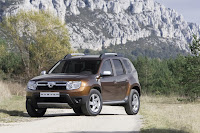









 2010 Volkswagen Tiguan 'Track & Avenue'
2010 Volkswagen Tiguan 'Track & Avenue'



 2010 Mercedes-Benz E350 Saloon/Estate 4MATIC
2010 Mercedes-Benz E350 Saloon/Estate 4MATIC
 2010 Mercedes-Benz E350 Saloon/Estate 4MATIC
2010 Mercedes-Benz E350 Saloon/Estate 4MATIC










































 2010 Aston Martin Rapide
2010 Aston Martin Rapide

























































 2010 Volvo S80 1.6D DRIVe
2010 Volvo S80 1.6D DRIVe
 2010 Volvo S80
2010 Volvo S80 2010 Volvo V70
2010 Volvo V70 2010 Volvo V70 1.6D DRIVe
2010 Volvo V70 1.6D DRIVe Honda FCX Clarity & Insight at COP15 Climate Change Conference
Honda FCX Clarity & Insight at COP15 Climate Change Conference



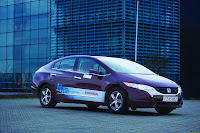










 THINK EV Fleet at COP15
THINK EV Fleet at COP15
 2010 Volkswagen Scirocco R
2010 Volkswagen Scirocco R




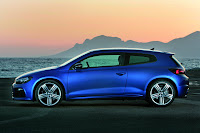



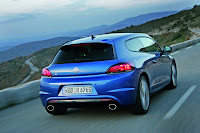










 2010 Citroen C3
2010 Citroen C3




 2010 Nissan Qashqai
2010 Nissan Qashqai
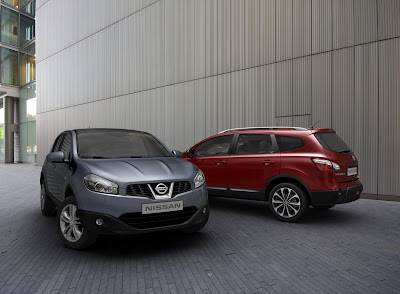



 2010 Hyundai Tucson
2010 Hyundai Tucson






 SEAT fleet : Exeo ST, Altea XL, Alhambra and Leo'n CUPRA
SEAT fleet : Exeo ST, Altea XL, Alhambra and Leo'n CUPRA
 2010 Nissan CUBE - UK Version
2010 Nissan CUBE - UK Version



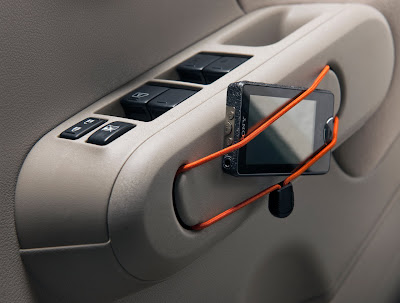
 2011 Hyundai Sonata U.S. Spec.
2011 Hyundai Sonata U.S. Spec.










 2010 Range Rover Sport Autobiography Limited Edition
2010 Range Rover Sport Autobiography Limited Edition



 Honda 'Personal-Neo Urban Transport' (P-NUT) Concept
Honda 'Personal-Neo Urban Transport' (P-NUT) Concept









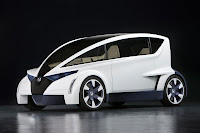







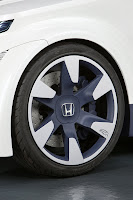






 Volkswagen Up! Lite Concept presented by Dr. Ulrich Hackenberg (front), board member technical development Volkswagen brand, Stefan Jacoby (middle), President and CEO Volkswagen Group of America, as well as Klaus Bischoff, head of Volkswagen Design.
Volkswagen Up! Lite Concept presented by Dr. Ulrich Hackenberg (front), board member technical development Volkswagen brand, Stefan Jacoby (middle), President and CEO Volkswagen Group of America, as well as Klaus Bischoff, head of Volkswagen Design.


































 2011 Mitsubishi RVR Crossover
2011 Mitsubishi RVR Crossover

 Capstone Turbine Corporation CMT-380
Capstone Turbine Corporation CMT-380
 2011 Ford Fiesta U.S. Spec.
2011 Ford Fiesta U.S. Spec.










































 2010 Infiniti G37
2010 Infiniti G37



 2010 Infiniti M37
2010 Infiniti M37
 2010 Infiniti M37
2010 Infiniti M37



















 New Alfa Romeo Giulietta
New Alfa Romeo Giulietta


 The limited-edition Maserati GranTurismo S MC Sport Line
The limited-edition Maserati GranTurismo S MC Sport Line
 20-inch gloss black Neptune design alloy wheels
20-inch gloss black Neptune design alloy wheels
 Rear lip spoiler in carbon fibre
Rear lip spoiler in carbon fibre
 Interior carbon package from the MC Sport Line
Interior carbon package from the MC Sport Line
 MC design aluminium pedals
MC design aluminium pedals
 2010 Ford Focus ECOnetic - UK Version
2010 Ford Focus ECOnetic - UK Version




 2011 Ford Fiesta - RHD at 2009 Thailand Motor Expo
2011 Ford Fiesta - RHD at 2009 Thailand Motor Expo 2011 Ford Fiesta - RHD at 2009 Thailand Motor Expo
2011 Ford Fiesta - RHD at 2009 Thailand Motor Expo
 Ford Focus Titanium Limited Edition
Ford Focus Titanium Limited Edition
 New Ford Everest Navy Edition
New Ford Everest Navy Edition
 2010 Ford Escape - Asian Edition
2010 Ford Escape - Asian Edition















 2010 Volkswagen AMAROK
2010 Volkswagen AMAROK





 Nissan ROOX - Urban Selection
Nissan ROOX - Urban Selection
 Nissan ROOX - Highway Star
Nissan ROOX - Highway Star
 Nissan ROOX - Highway Star Interior
Nissan ROOX - Highway Star Interior
 Seat Arrangement
Seat Arrangement


































 2011 Audi A8 4.2 TDI quattro
2011 Audi A8 4.2 TDI quattro


















































































































































Motobike :